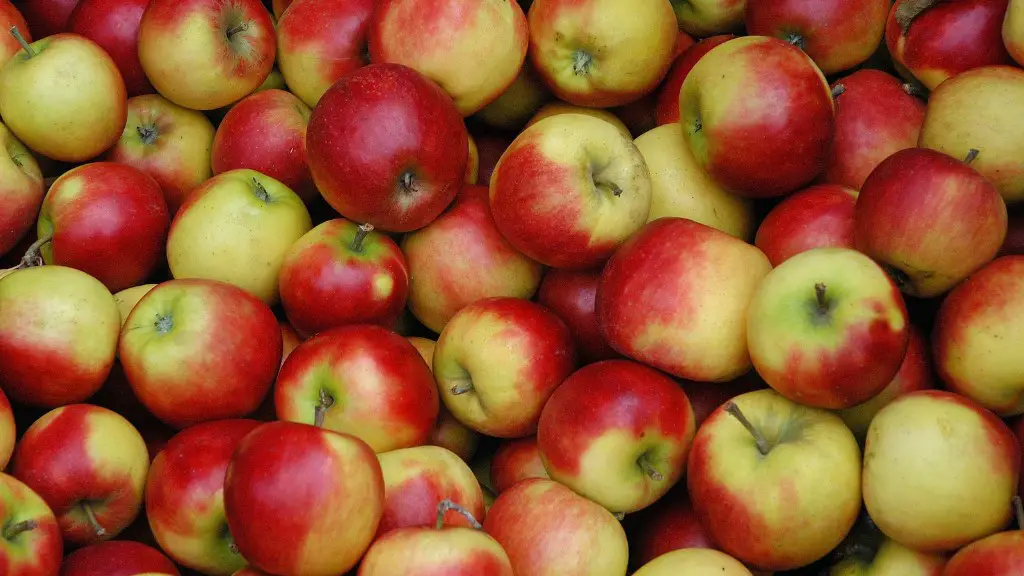When planting a lemon tree, it’s important to consider both the type of soil in your yard and the climate. You’ll also need to know how deep to plant the tree itself. Generally, you’ll want to ensure the roots are covered with only 3-4 inches of soil. However, if you have a sandy or clay-based soil, you’ll need to dig a slightly larger hole to prevent compaction and ensure good drainage. You’ll also want to make sure the tree is level or slightly angled in the direction where you want your plant to grow.
Beginning the digging process can be done with an auger or shovel. Digging out the planting hole is a delicate process and it’s important to use the same soil that you take out of the hole to backfill the area around the tree. To start, you’ll want to make sure the hole is twice as wide as the root ball of the tree and the same depth. That should provide enough room to spread out the roots and create a level base.
As you plant, make sure you don’t bury the tree too deep, as this can cause root rot and other issues. After the root ball is in the planting hole, begin to backfill with loose soil. You’ll want to work the soil with your hands to create a good environment for root growth then fill the hole as evenly as possible, with added soil as needed. If your soil is on the heavier side, mix in an organic compost or slow-release fertilizer to provide additional nutrients.
Compact the soil around the tree lightly, using the back of a shovel or your hands. You’ll also want to add a layer of mulch around the trunk. Mulch has numerous benefits such as regulating soil temperature, conserving moisture and preventing weed growth. Once complete, water your tree in well, as this helps start root growth.
Now your lemon tree should be planted but you’ll want to prune and train it. Training and pruning should start straight away, as it encourages a strong branch structure and helps maximize your growth potential. Make sure you remind yourself to water, adding a layer of organic material as it breaks down over time, as well as monitor for pests or diseases. Taking all these steps should give you a healthy lemon tree for years to come.
Deciding When To Plant
A key consideration when planting a lemon tree is understanding when to actually plant the tree. Planting it too early can stress the new tree and damage it, but planting it too late can lead to a lack of growth. Timing is key, as possible frost or winter temperatures can damage new growth and the plant may not do well in a winter dormancy. The ideal time to plant a lemon tree is late winter or early spring.
Land Preparation
In addition to understanding when to plant your lemon tree, you’ll also need to make sure the soil is ready for planting. Ideally, you should prepare your land about a month in advance. You’ll want to make sure the nutritional, physical, and chemical makeup of your soil is suitable, as an unsuitable soil composition can lead to stunted growth or even death of your new tree. You’ll also want to make sure the soil is soft and well drained for optimal growth.
Picking The Right Location
Along with knowing how deep to plant a lemon tree, you’ll also need to consider the location. Since you’ll be adding a tall tree to your yard, it’s important to select an area that has full sun, as citrus trees need 6-8 hours of direct sunlight to thrive. You should also make sure the area you’ve selected is relatively free of pests or diseases, as these issues can spread quickly to your tree.
Protecting Tree From Cold
In cold climates, it’s especially important to make sure your lemon tree is protected when the temperatures drop. Installing cold-frames or tree wraps are useful measures to protect your tree. Cold-frames allow sunlight in while keeping the cold air out. Tree wraps also help keep the bark from splitting or cracking from cold wind and gives your tree an extra layer of insulation. You should also make sure to cover the tree with a cloth when temperatures drop below freezing.
Pruning The Tree
Finally, you’ll want to ensure that you’re pruning your lemon tree correctly. Pruning serves an essential role in maintaining tree health and its production of flowers and fruit. It’s also vital to making sure that your tree grows correctly and in a safe direction. Too much pruning can reduce yield and too little can reduce fruit production. Plus, pruning regularly will result in a higher yield in the long-term.
Fertilizing The Tree
Fertilizing your lemon tree is important for three main reasons – to supplement nutrient levels in the soil, to fill-in nutrient deficiencies, and to spur growth and development. The type of fertilizer you use should correspond to the type of soil you have. Sandy soils require less frequent but more frequent fertilizer applications, while clay soils require more water and need to be fertilized less frequently. Whether you’re using organic or chemical fertilizers, it’s important to make sure that you’re fertilizing carefully and boosting your lemon tree’s growth.
Mulching The Tree
Mulching serves many purposes for a lemon tree. It helps conserve soil moisture and keep the soil temperature consistent, and can help with water logging/erosion. It can also reduce weeds, and promote decomposition of organic materials. You’ll want to make sure that you’re using the proper type of mulch for your lemon tree. Organic mulches will help improve the quality of the soil, while inorganic mulches will reduce water loss and create an even distribution of temperature.
Watering The Tree
Watering your lemon tree is critical and it’s important to make sure that you’re doing it correctly and regularly. Lemon trees need a substantial amount of water, especially when they’re still in their early growth stages. You’ll want to make sure that you’re providing enough water while also avoiding over-watering, as this can lead to root rot and nutrient deficiencies. Incorrect watering can also lead to a decrease in fruit quality. Water your lemon tree until the soil is damp, but not saturated.



